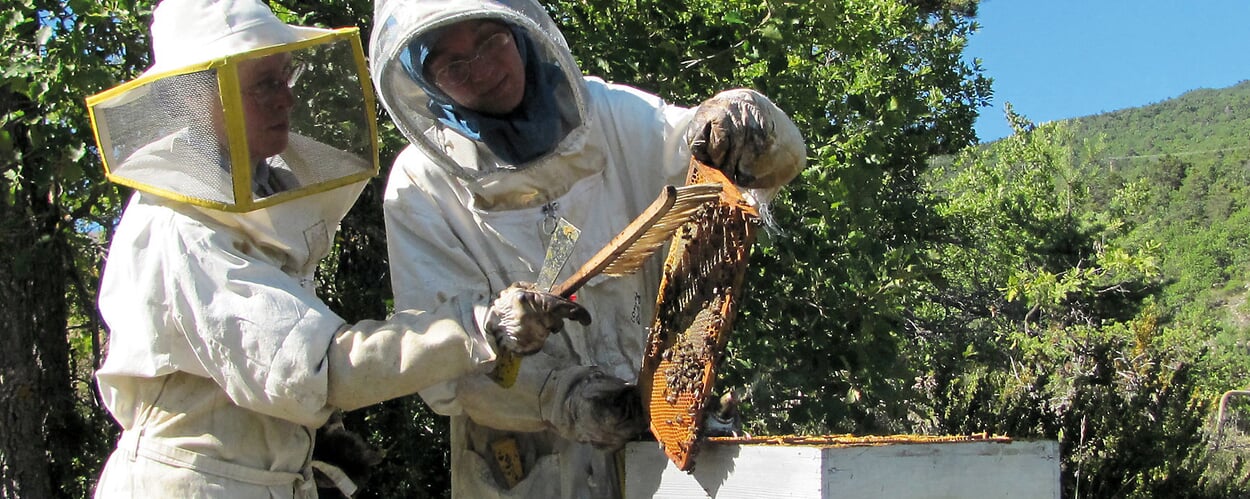Gutes aus Klöstern
Patience and energy. Nuns as beekeepers
When it comes to the bees, the Benedictine nuns in Rosans swap their black habit for the beekeeper's white overalls. Bees do not like it at all when you approach them in dark clothing. With their primal instincts, they then suspect the bear is approaching and become poisonous accordingly. The monastery is quite hidden in an area of slate weathering heaps in the French Prealps and offers very good conditions for beekeeping with the abundance of flowering herbs and other plants. Honey is always a reflection of the microclimate of the particular site and its environment, because a bee colony collects nectar in a radius of up to 5 km in diameter. Bees are industrious, without question, but to industriousness is added their large number: a colony can include up to 50,000 bees. They are organized in a division of labor, but each bee also lends a hand just where it discovers something to do. And this is very efficient, since it can also take a rest now and then. In beekeeping, every year is different. So the sisters have to adapt to the rhythm of the bees. During the long winter, they have to be just as patient and leave the colonies alone as they have to be on hand in the spring.
For the bees, the little light that enters through the flight hole is enough to determine that the sun is rising higher. Thus, they begin their brood business while the outside temperatures are still low. With the first blossoms and temperatures above 15 °C, life comes to the colonies: they begin to fly out, while new combs are built in the hive. The queen can lay up to 2,000 eggs a day, from which the finished insects develop in 21 days. In this way, a colony becomes "ready for bees", as it is called in beekeeping parlance, i.e. fully operational, within six weeks. The sisters currently look after about twenty colonies. That's not very much, but it's also a lot of work. In the season, it is the weekly inspections, but especially the honey harvest, which requires full commitment. Honeycombs are heavy: a single one can weigh up to 2.5 kg and thus up to 30 kg for a filled compartment with ten combs. This is only possible with combined forces. The combs are sealed with wax, which must be removed before spinning. Spun honey must then ripen in larger containers and be stirred until creamy before it can be bottled.



